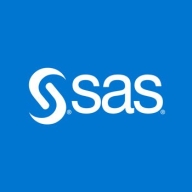

SAS Access and Azure Data Factory compete in the data integration tools category. Based on their abilities in cloud environments, Azure Data Factory appears to have the upper hand due to its comprehensive cloud-based features.
Features: SAS Access provides strong data connectivity, compatibility with SAS technologies, and integration within SAS environments. Azure Data Factory offers extensive cloud service integration, automated workflows, and supports a range of data formats.
Ease of Deployment and Customer Service: SAS Access is supported by detailed deployment guidelines and robust technical support, particularly for on-premises systems. Azure Data Factory provides flexible deployment options with comprehensive online support resources and documentation, suiting cloud-native environments well.
Pricing and ROI: SAS Access may incur higher setup costs unless organizations already employ SAS systems, offering good ROI within SAS ecosystems. Azure Data Factory features a subscription-based pricing model, delivering cost-effectiveness and scalability, with high ROI for enterprises leveraging cloud technology.
| Product | Market Share (%) |
|---|---|
| Azure Data Factory | 5.2% |
| SAS Access | 0.4% |
| Other | 94.4% |


| Company Size | Count |
|---|---|
| Small Business | 31 |
| Midsize Enterprise | 19 |
| Large Enterprise | 55 |
Azure Data Factory efficiently manages and integrates data from various sources, enabling seamless movement and transformation across platforms. Its valuable features include seamless integration with Azure services, handling large data volumes, flexible transformation, user-friendly interface, extensive connectors, and scalability. Users have experienced improved team performance, workflow simplification, enhanced collaboration, streamlined processes, and boosted productivity.
We monitor all Data Integration reviews to prevent fraudulent reviews and keep review quality high. We do not post reviews by company employees or direct competitors. We validate each review for authenticity via cross-reference with LinkedIn, and personal follow-up with the reviewer when necessary.